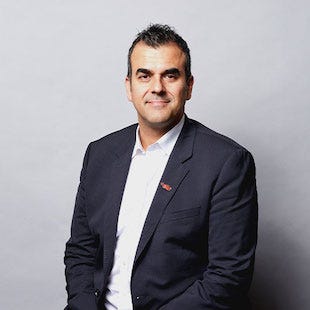Perimeter Inversion: Turning Digital Security Inside OutPerimeter Inversion: Turning Digital Security Inside Out
We need security solutions that are designed from the ground up to operate in today’s dynamic environment.

The idea of a network perimeter is quickly morphing into something more complicated. We work outside of the corporate network on our own devices, storing and moving things through clouds of applications, storage, and service providers. How will security change in the next few years to adapt to this new reality?
Almost since its inception, digital security has followed a perimeter model, which may seem like the Maginot Line of cybersecurity. We are spending more and more time outside the firewall, so we need to think beyond it. At the same time, attackers are finding new vulnerabilities to get under the walls, developing new techniques to get around them, and finding softer targets with valuable assets to compromise. With the wide scale adoption of server virtualization and cloud computing, the concept of an enterprise data center has evolved into private and hybrid clouds that span on-premises and cloud-hosted servers in a seamless fashion.
The new security model needs to follow the data and users, as well as their devices and services. This does not mean that security will be completely cloud-based, with no on-premises component. Cloud computing and storage will still incorporate a perimeter and access approach, as will the data center. The data center needs to shift focus from servers to applications and data, which move in a dynamic manner with decreasing emphasis on location or ownership of hardware. But it will have to augment this with multiple vantage points of traffic flows, analytics, and collaborative intelligence. Encrypted communications make it difficult for firewalls to inspect individual traffic flows, increasing the importance of multiple perspectives.
This is strikingly similar to the physical security world we find around us. Attackers are not defined by physical borders, so defenses need a much higher level of collaboration, large volumes of intelligence, and powerful analytics to pull insight out of the noise and chatter.
Real-Time Security
The key to successful security operations in the new data center is real-time dynamic provisioning and orchestration. Security must follow the data, follow the application, and follow the user. One approach is a dynamic perimeter that forms around every flow. The network is no longer static or deterministic; it has become fluid, and security needs to be agile. This means implementing cloud security solutions that can redirect flows between endpoint devices and applications for inspection, analysis, and prediction. These solutions need to ask, “Is this normal activity between this device/location/user/application?”
With mobile users and IoT devices connecting directly to the cloud, the new model means securing the channel between endpoints and applications, not just with encryption but by watching out for attacker redirection and man-in-the-middle attacks that could disrupt devices or data enough to affect your operations. Encryption and tokenization become critical when corporate data is stored on shared resources in hybrid or public clouds. Data must be secured both at rest and at all points of the flow to protect it from hardware or virtualization exploits. Identity and policy management will become extremely important in such a dynamic environment, defining and enforcing policies that prevent sensitive information such as personally identifiable data or health details from straying outside of secure locations and devices.
Another approach of real-time dynamic provisioning and orchestration is shrinking the perimeter around each individual device, forcing the devices to protect themselves. Many devices will not have the compute power necessary to do this, requiring a mix of hardware-enabled trust and cloud-based processing.
Perhaps the most important part of this new security model is the analytics necessary to put together multiple observations from different agents at varying points in the cloud into a cohesive picture that can differentiate signal from noise, without an overwhelming number of false positives.
An interesting analogy to this method is how airplane flight control systems were developed. Different developers in different locations using different languages and algorithms running on different hardware developed systems for the same set of controls. In operation, only when multiple systems were within tolerance would the airplane actually take action. In security, this approach not only reduces false positives, it makes it far more difficult for attackers to develop threats that can evade the detection algorithms because multiple are in use at any time.
We need to build security solutions that are designed from the ground up to operate in this new dynamic environment: Multiple perimeters, hardware-based trust, and cloud-scale analytics fuelled by large volumes of shared threat intelligence must enable local and cloud-based agents to detect and disrupt attacks at machine speeds.
About the Author
You May Also Like




